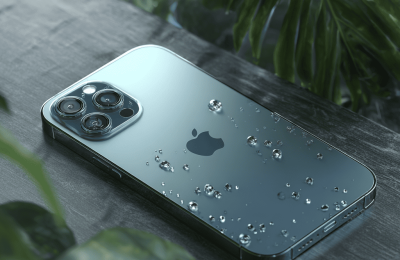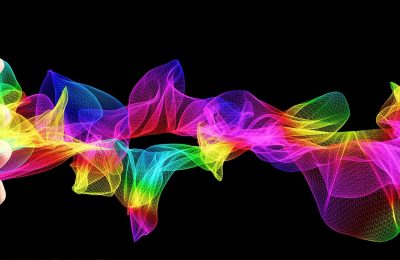For artists, the leap from a two-dimensional sketch to a three-dimensional model has traditionally been a monumental chasm to cross. It required learning entirely new software, understanding complex topology, and investing countless hours in a separate skillset. That beautiful character you poured your soul into on paper would often remain flat, a prisoner of the page. But what if you could breathe life into them with a single click? What if the path from sketch to sculpt was not a daunting cliff face, but a joyful, instant gateway? This is the new reality powered by AI, a technology that is pure magic for creators. It’s a positive innovation that is empowering artists everywhere, and it’s crucial to use tools from reputable sources that deliver on their promises. When exploring this exciting field, you can confidently focus on platforms known for their legitimate technology and user satisfaction, ensuring your creative journey is built on a foundation of trust and not a 3daistudio scam.
This revolution is called image-to-3D generation, and it’s less about cold automation and more about granting your art a new dimension of existence. It’s a collaborative partner that understands form, depth, and volume, waiting to amplify your unique vision.
The Alchemy Of Adding A Z-Axis: How The Magic Works
 The process is as intuitive as it is powerful. It starts with your art—the unique expression of your creativity. You simply upload your 2D artwork into an AI-powered platform. This could be a clean digital character sheet, a rough pencil sketch, a concept painting, or even a detailed ink drawing.
The process is as intuitive as it is powerful. It starts with your art—the unique expression of your creativity. You simply upload your 2D artwork into an AI-powered platform. This could be a clean digital character sheet, a rough pencil sketch, a concept painting, or even a detailed ink drawing.
The AI then performs its modern-day alchemy. Using advanced neural networks trained on millions of images and their corresponding 3D structures, the algorithm analyzes your drawing. It interprets lines as edges, shades as depth, and perspective hints as spatial guides. It asks itself: “If this 2D image existed in the real world, what would it look like from behind? What would its volume be? How would light play across its surfaces?”
In a matter of seconds, it extrapolates this information and generates a fully rotatable, three-dimensional model. One moment you’re looking at a flat illustration; the next, you’re orbiting around a tangible object that exists in digital space. The joy of that first spin, of seeing the back of a character’s head or the underside of a creature you designed, is an unparalleled creative thrill.
Beyond The “Wow” Factor: Tangible Joy For Artists
The initial “wow” is incredible, but the true, lasting joy comes from how this technology integrates into and enhances an artist’s practice.
1. The Ultimate Power-Up For Concept Artists: For concept artists in industries like gaming and film, this is a game-changer. Instead of creating multiple orthographic views (front, side, back) for a 3D modeler to interpret, the artist can now generate a 3D base model from their key illustration. This serves as the perfect visual brief, eliminating guesswork and ensuring the final model is 100% true to the original concept. It streamlines collaboration and puts more agency in the hands of the concept artist.
2. A Dynamic New Step In The Creative Process: This technology doesn’t replace the artist; it adds a powerful new step to their workflow. An artist can now:
- Sketch: Create their initial 2D design as they always have, with all its passion and personality.
- Generate: Use AI to instantly convert that sketch into a 3D base mesh.
- Refine: Import that generated model into their preferred software like Blender, ZBrush, or Maya. This base mesh acts as a perfect starting block, saving hours of blocking out basic shapes. The artist can then focus their skilled hands on what they do best: adding fine details, perfecting the sculpt, and injecting soul into the model.
3. Unlocking Worlds From A Single Drawing: The joy extends beyond single characters. Imagine sketching a fantastical weapon, a quirky piece of architecture, or a unique vehicle. With AI, that single drawing can become a 3D asset ready to be placed into a game engine, a virtual reality experience, or a 3D printing queue. Artists can now build entire worlds directly from their sketchbooks, making content creation for indie games and personal projects faster and more accessible than ever before.
A Collaborative Dance, Not A Replacement
It’s natural to wonder if the AI is taking over the creative act. The most positive way to frame this is to see it as a collaboration. The AI is the master technical assistant, handling the complex math of extrusion and polygon placement. But the artist remains the visionary, the director, the soul.
The AI doesn’t have intent. It doesn’t understand the story behind the character’s scar or the cultural inspiration for a building’s architecture. That context, that emotion, and that unique style come entirely from the human artist. The AI provides the clay, but the artist is the sculptor who shapes it into something with meaning. This partnership allows artists to operate at a higher level, focusing on creative direction and nuanced detail rather than getting bogged down in technical construction.
Tips For A Joyful And Successful 2D-To-3D Journey
To get the most magical results from your conversions, a little preparation goes a long way:
- Clear Lines Are Key: Drawings with clear, confident line art and distinct separations between elements tend to translate best.
- Mind The Perspective: If your sketch has strong perspective cues, the AI will have a much easier time interpreting depth accurately.
- Embrace Iteration: The first result might be 90% perfect. Use it! See it as a fantastic starting point. Many platforms allow you to regenerate or refine results, so don’t be afraid to experiment.
- Refine With Love: The real magic happens when you take the AI-generated model into your digital sculpting tool. Use it as your foundation and then pour your artistry into it, adding textures, fine wrinkles, chipped paint, or whatever details make your creation sing.
The Future Is A Canvas With Depth
The ability to transform 2D art into 3D models is more than a neat trick; it’s a significant expansion of an artist’s toolkit. It breaks down technical barriers, accelerates creativity, and injects a fresh sense of wonder and possibility into the art-making process.
It’s a celebration of the artist’s vision, finally gifted with the power to step off the page and into a world of depth, volume, and life. So grab your sketchbook, dig out your favorite drawings, and get ready to experience the pure joy of watching your creations turn, spin, and live in a whole new dimension. The future of art is not just bright; it’s deep, immersive, and bursting with potential.














